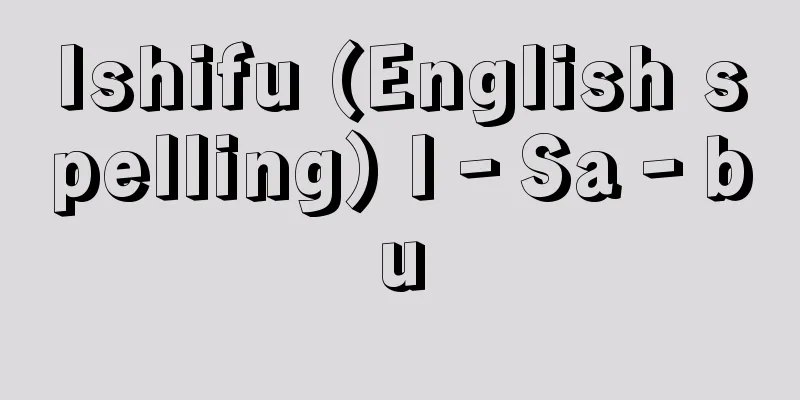Shomuzata - affairs

|
A legal term used in the Kamakura Shogunate, referring to lawsuits and trials over the ownership of territories (land). During the time of Minamoto no Yoritomo, trials in the Kamakura Shogunate were decided by Yoritomo himself as Kamakura-dono, but as the regent government developed, the Goseibai Shikimoku was established and the judicial institutions Hyojo-Hikitsuke were established, with jurisdiction being determined based on the status of Gokenin. From around the end of the 13th century, this was changed to a system in which jurisdiction was determined based on the subject of the lawsuit, with Shomu-sata, Zatsumu-sata (lawsuits over the buying and selling of fields, movable property, and credit-related matters), and Kendan-sata (criminal lawsuits), with Shomu-sata being administered by Hikitsuke, Zatsumu-sata by Monjusho, and Kendan-sata by the Samuraidokoro. This system is thought to have been established around the time of the Koan era (1278-88), and reflected a change in the shogunate's attitude, which placed more importance on the swift resolution of litigation cases than on protecting the rights of the parties involved. The procedure for Shomu-sata changed over time, but a typical example from the end of the Kamakura period, when it developed, was as follows: The plaintiff submits a complaint along with documentary evidence to the Kubari Bugyo at the Monjusho. The Bugyo examines it and, if there are no procedural errors, sends it to the Hikitsuke. The Hikitsuke issues a Monjo, which asks the Ronnin (defendant) to submit a petition (answer) (this is repeated three times, so it is called Sanmon Sando). If the trial cannot be concluded through written proceedings alone, the plaintiff and debater are summoned and a showdown (oral argument) takes place at the Hikitsuke seat. Next, the court prepares a draft judgment, and after the decision of the council, the successful party is summoned and a written judgment is issued, and the trial is concluded. The proceedings are conducted on a party-performed basis, meaning that the plaintiffs and arguments bear a large role themselves, and the burden of proof is generally on the plaintiff. [Tokuhiko Ushita] [Reference] | | |Source: Shogakukan Encyclopedia Nipponica About Encyclopedia Nipponica Information | Legend |
|
鎌倉幕府の法制上の用語で、所領(土地)の領有(所有)についての訴訟、裁判のこと。鎌倉幕府の裁判は、源頼朝(よりとも)のときは鎌倉殿(かまくらどの)たる頼朝の親裁であったが、執権政治の発展につれ、「御成敗式目(ごせいばいしきもく)」の制定を経て、評定(ひょうじょう)―引付(ひきつけ)という裁判機関が整備され、御家人(ごけにん)という身分を基準として管轄が定められていた。それが13世紀末ころから、所務沙汰、雑務(ざつむ)沙汰(田畑売買・動産および債権関係の訴訟)、検断沙汰(刑事訴訟)という、訴訟対象を基準として管轄を定める制度となり、所務沙汰は引付、雑務沙汰は問注所、検断沙汰は侍所(さむらいどころ)が管掌した。この制度の整備は弘安(こうあん)(1278~88)ころと考えられ、当事者の権利保護よりも訴訟案件の迅速な解決に重きを置く、幕府の姿勢の変化を反映したものである。所務沙汰の手続は時期により変遷があるが、典型的に発達した鎌倉末期の場合では次のようなものであった。訴人(原告)は訴状に具書(ぐしょ)(証拠書類)を添えて、問注所の賦奉行(くばりぶぎょう)に提出する。奉行は審査して手続の誤りがなければ引付に送る。引付から問状(もんじょう)を発して論人(ろんにん)(被告)に陳状(答弁書)を提出させる(これを三度繰り返すので三問三答という)。書面審理だけでは結審に至らなければ、訴人・論人を召喚して、引付の座で対決(口頭弁論)を行う。ついで引付で判決原案を作成し、評定会議の決定を経て、勝訴者を喚出して裁許状(判決書)を交付し、結審となる。裁判の進行は当事者遂行主義といって、訴・論人が自ら負担する役割が大きく、挙証責任は原則として訴人にあった。 [羽下徳彦] [参照項目] | | |出典 小学館 日本大百科全書(ニッポニカ)日本大百科全書(ニッポニカ)について 情報 | 凡例 |
Recommend
Songhua River - Songhua River
A large river that flows through the center of No...
Togariishi ruins - Togariishi ruins
The remains of a settlement from the middle Jomon...
Ukouku - Ukouku
...The former is mainly sung during festivals, an...
My Little Sister is a Demon
…As a Japanese folk tale, it is also called “The ...
Awadhi - Awadee
…The title literally means "The Lake of Rama...
Lespedeza juncea (English spelling) Lespedezajuncea
… [Hiroyoshi Ohashi]. … *Some of the terminology ...
Anser cygnoides (English spelling)
… [Yukio Taniguchi]. … *Some of the terminology t...
Vo Nguyen Giap
1912‐ One of the top leaders of the Communist Part...
Toyama [Village] - Tomiyama
A village in Kitashitara County, in the northeaste...
Brick - Brick (English spelling)
A type of building material made primarily from cl...
Harsacarita (English spelling)
… King Harsha was a brave military commander, but...
Endosperm - albumen
It has two meanings. In the broad sense, it refer...
Variable nebula
A type of diffuse nebula, in which the brightness ...
Ave verum corpus (English spelling) Aveverumcorpus
... Since the second half of the 18th century, th...
Menotaxis
...As a result, the fish does not get swept away....









